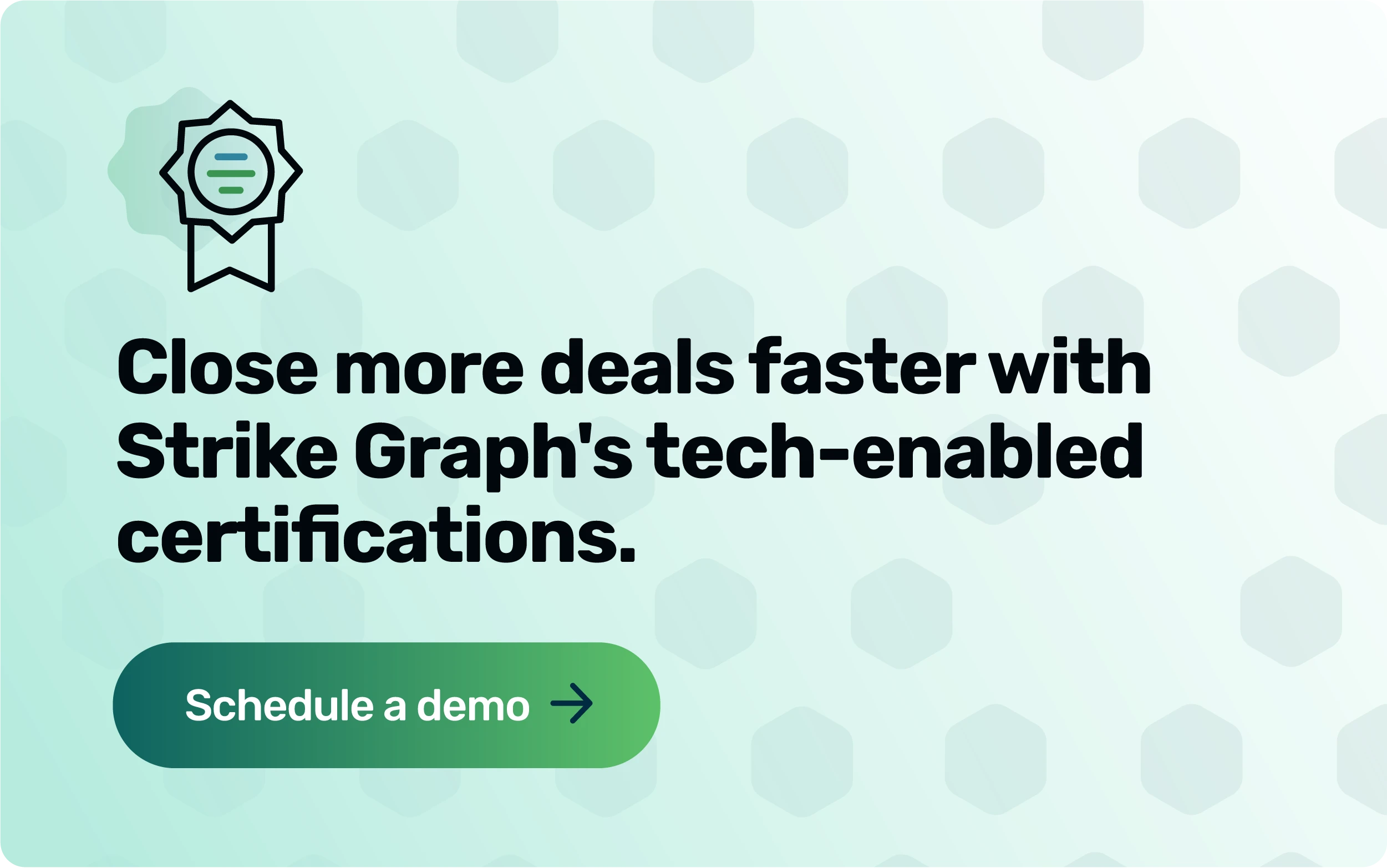The security landscape for businesses is complex, no matter what kind of business you’re in. Regulations continue to change and become more difficult to fulfill. Security threats become more nuanced, and keeping up with the latest security asks can feel like a herculean task. But thankfully, there are models for how to take a business-wide approach to cohesively tackling all of these needs – while keeping your business running smoothly.
Governance, risk, and compliance (GRC) is a coordinated model of guidelines and practices that an organization uses to achieve its business goals while prioritizing the integrity of its security. This model is especially beneficial in helping organizations stay on track with regulatory requirements. In addition to unifying a business’s approach to governance, risk, and compliance (three key pillars of business strategy) GRC also addresses the integration of software used to help streamline this strategy across the different sectors of the organization.
To better understand GRC, let’s take a moment to look at each of these components individually:
- Governance is a company’s overall framework for achieving its business objectives. On a broad level, this includes policies covering many issues, like accountability, ethics, conflict resolution, and information transparency. In regard to information — which is the main focus of GRC — the goal of governance is to ensure integrity, availability, and confidentiality. This means creating company strategies that accomplish multiple goals: keeping security at the forefront, continuously working toward compliance, facilitating risk mitigation, and clearly communicating security protocols to all stakeholders.
- Risk management can refer to many different areas of a company, including legal, financial, strategic, or security-related sectors. In terms of IT security, this process involves identifying current and potential security risks, examining the likelihood of each risk and its possible consequences, and finding any holes in the security framework that need to be addressed.
- Compliance is the ongoing process of making sure that your organization’s security profile meets the requirements of the frameworks you must comply with – either for legal purposes or to ensure you’ll be competitive in the marketplace. Often this involves undergoing a company-wide process to ensure all regulations are met and then passing an audit to show either compliance or certification. The standards for these frameworks are constantly evolving, so the work of maintaining compliance is continuous.
Why is governance, risk, and compliance important?
Governance, risk and compliance are important for several reasons. At the top of this list is that creating a business strategy with these components in mind allows companies to build the most reliable security program possible. With the same strategy, organizations can address security risks head-on while also becoming and staying compliant with the many regulatory requirements they have to follow.
A strong GRC program has other benefits as well:
- Remaining competitive in a growing tech marketplace can create pressure, but having a coordinated plan for information security ensures that organizations stay competitive and have the opportunity to grow.
- With company growth, organizations also end up working with third-party vendors. This facilitates expansion, but it’s another factor that introduces risks. A strong GRC plan, however, can help implement protocols to protect organizations from the risks a third-party vendor might bring.
- Compliance requirements are always changing and can be difficult to keep up with, but the right strategy will make meeting compliance needs an ongoing process.
- The cost of risk management is also constantly increasing. But an effective GRC plan condenses those costs by consolidating the way risks are handled.
- The consequences of an unidentified threat can be massive, but a GRC platform ensures that the business prioritizes this need and significantly reduces the possibility of such threats.
A strong GRC program also builds client trust, strengthens efficiency of operations, and ensures a strong reputation while staying away from hefty fines that result from security breaches. And, with the right GRC platform that sets and evaluates meaningful objectives while generating metrics, organizations can reduce costs and increase their return on investment (ROI).
What is the purpose of compliance risk management?
Having a strategy for GRC allows organizations to engage in compliance risk management. This is an ongoing process that facilitates an organization's ability to identify, assess, address, and monitor different compliance risks, which could be related to security, regulations, or legal requirements. This often means examining a company’s IT infrastructure, assets, and employees to reveal any potential vulnerabilities. GRC allows for efficient, data-driven decisions to help keep business moving securely forward.
The purpose of compliance risk management is that it ensures an organization’s compliance will always be up to date. With that compliance or certification, organizations maintain a strong security posture and avoid potential losses, whether those are incurred through fines, damage to reputation, or negative impacts on people in the organization. This proactive type of management ensures that all those potential risks to the organization are mitigated through careful assessment, monitoring, and prompt management of security risks.
A strong GRC program will include a strategy for compliance risk management, helping you maintain your organization’s integrity, revenue, and future business opportunities.
What is a GRC framework?
A GRC framework is a systematic approach that an organization uses to manage its governance and compliance risk – in short, a way to successfully implement a GRC strategy. Using a framework means starting with the big picture, and adopting key policies that will guide an organization toward the goals it wants to achieve.
The key policies adopted through the framework allow all stakeholders to follow shared guidelines when making business decisions. When policies and workflow structures are created, the guidelines established in the framework help these ideas to take shape in a way that’s best for the organization as a whole. When new software or IT structures are integrated, the GRC framework also helps to guide those decisions to maintain security integrity.
Simply put, a GRC framework is a model for decision-making that all parts of an organization can follow to help the organization develop, while keeping its information security in-tact.
The GRC Capability Model
The GRC Capability Model is a holistic set of guidelines that aim to assist companies who want to start using a GRC strategy. The model solidifies a company-wide understanding about how the GRC framework will function, what each person’s role is in advancing the strategy, and what policies and training are in place to ensure consistency. The following are the four components of the GRC Capability Model:
- Learn: Educate employees about the background, culture, and core values of the organization that help support the strategies and actions that the GRC will use to advance company goals.
- Align: Make sure that your goals, strategies, and steps are aligned with each other. In order to do this, you have to consider four key components: values, opportunities, threats, and requirements.
- Perform: Establish a system that promotes actions that achieve the results you want, prevents actions that delay or impede organizational goals, and closely monitors operations for consistency.
- Review: Consistently review the effectiveness of operations, and adjust and realign your implementation as necessary to make sure organizational goals are being achieved.
GRC maturity
GRC maturity refers to the levels of alignment and integration of governance, risk management, and compliance throughout all sectors of your business. When your GRC framework has ushered in results like cost effectiveness, operations that yield productivity, and strong threat detection and mitigation, these are all indicators of GRC maturity. When the processes adopted through the GRC framework are not producing efficient results and do not seem to be leading the organization towards its goals, this indicates a low level of maturity – and almost certainly means that those processes need to be revisited.
So how can you be sure that the GRC framework you’ve adopted reaches maturity? One way is to adopt the capability model along with your framework and platform. This will ensure everyone in the organization has the background they need to understand the plan, its key guidelines, and the ways their daily functions align with those goals. It will also ensure that the organization revisits the plan consistently to assess its progress and effectiveness.
Challenges – and keys to success – of GRC implementation
While an overall GRC strategy holds great potential value for an organization, the large scale of such a strategy can also introduce challenges. The following are possible issues or roadblocks that companies might encounter while implementing a GRC plan, along with ways to deal with these issues:
- Alignment: Alignment in a GRC plan is paramount. But when various activities of the GRC become disjointed, a number of problems can arise, like difficulty analyzing risk effectively. Starting with a GRC framework that creates alignment amongst all business activities is key to avoiding these problems.
- Response plan: It can be difficult to keep up with the changes that GRC monitoring reports will potentially require, so companies need to have a plan in place for how they will manage efficient responses to the needs and changes that these reports identify.
- Cross-team planning: Most organizations are divided into departments – all of which create and track data in a way that makes the most sense for them. Because GRC needs to combine all of an organization's information, this can lead to some duplication of data, and a need to strategize how to manage the combined information.
- Transparency: Along with alignment, communication is also key to the success of a GRC program. All stakeholders and employees need to agree to complete transparency when it comes to information sharing. Otherwise, departments will become silos and the processes required by the GRC will become significantly more difficult to accomplish.
The reality is that any large-scale project has its challenges without clear guidelines, communication, response plans, and buy-in. Careful planning from the start with a GRC framework, building company culture around the goals of the GRC, and choosing a comprehensive platform best suited to your goals are the best ways to proactively address these challenges.
GRC Tools
GRC tools are applications that help manage operations and policies and streamline compliance needs. They also help detect and assess risks, manage access for users, and produce reports based on metrics the program is collecting.
Most GRC tools fit into the following functions:
- Software: Various tasks in a GRC program can be automated through software that allows businesses to manage risks and policies, stay up-to-date with compliance, converge multiple departments or businesses through a single platform, and simplify auditing processes. These systems often use dashboards that display updated key performance metrics that allow organizations to flexibly respond to needs.
- Auditing: Regulatory compliance software helps you determine the effectiveness of your current GRC activities. Doing internal audits to see how far along you’ve come in your GRC goals and making changes when necessary is a great way to adapt a flexible stance in the GRC process.
- User management: This software allows organizations to create workflow management that aligns with the broader goals of the GRC. They can also grant information access to the right people, so that confidential or private information stays secure.
- Security information and event management (SIEM): This type of software is dedicated to assessing and predicting risk, and determining steps or changes that will help mitigate those risks.
GRC vs. TrustOps
GRC is a term that’s been around a while. You might have heard a newer term being used that seems similar in some ways — TrustOps. TrustOps and GRC are similar in that they both tackle common security challenges, but they’re not exactly alike. The key difference is in how they approach revenue.
In GRC, revenue isn’t part of the equation. TrustOps take things a step further by saying trust in general (which is at the heart of GRC) is essential to relationship building and thus to revenue growth. In the simplest terms, GRC is focused on security as an end goal. TrustOps is a more holistic approach that puts all aspects of GRC into a constellation of trust-building strategies. ProTip: Learn how trust assets can boost your business.
Getting started with GRC or TrustOps
When getting started (or growing) your GRC or TrustOps program, there are a number of factors to consider. Which software has the most user-friendly structure and interface? Which platform will allow you to stay on track with all the certifications and compliance requirements that you need? Which solution matches both your budget and your expectations?
Strike Graph’s platform ticks all these boxes and allows you to manage everything in one place. Our software is comprehensive enough to support the design, operation and measurement of your security program and flexible enough to work with the security structures you already have in place.
.jpg?width=1448&height=726&name=Screen%20Shot%202023-02-09%20at%202.57.5-min%20(1).jpg)







